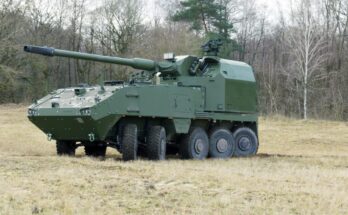
Senate Armed Services Committee Chairman Roger Wicker (R-Miss.) has released an updated version of the defense portion of the reconciliation bill, negotiated jointly by members of the House and Senate Armed Services Committees. The legislation allocates approximately $150 billion to the Pentagon and modifies several funding categories compared to earlier, separately released House and Senate proposals.
The reconciliation package reduces funding for military border security operations by $2.3 billion compared to the most recent Senate proposal. The bill provides $25 billion for munitions production, munitions industrial base support, and ramping up production of critical minerals. That figure is $2 billion more than the previous Senate version and $4 billion more than the original House plan. The new legislation also bolsters the shipbuilding sector by $1 billion over the Senate version, but the House originally proposed $34 billion for this category.
President Trump has urged lawmakers to finish work on the bill before the July 4 recess. “To my friends in the Senate, lock yourself in a room if you must, don’t go home, and GET THE DEAL DONE THIS WEEK,” the president wrote on Truth Social. “Work with the House so they can pick it up, and pass it, IMMEDIATELY. NO ONE GOES ON VACATION UNTIL IT’S DONE.”
The reconciliation bill has become a central element of the administration’s FY26 budget plan. Pentagon spending is projected to rise to $961.6 billion in FY26, reflecting a 13.4 percent increase over FY25 enacted levels. However, this figure includes $113.3 billion in reconciliation funding. Excluding that, the FY26 defense budget remains flat at $848.3 billion. Notably, the base budget reduces acquisition funding by $25 billion, with the expectation that the reconciliation bill will cover the shortfall. Some defense advocates in Congress have criticized the plan for failing to increase the Pentagon’s base budget.
The broader national security request includes defense-related programs that fall outside the Pentagon and totals $892.6 billion in FY26, excluding reconciliation funds. This amount is consistent with FY25 enacted levels. When reconciliation funding is included, the total national security request increases to $1 trillion.
Shaun's deep-rooted interest in military equipment continues in his role as a senior defense analyst with a focus on the United States. He played an integral role in the development of Forecast International's U.S. Defense Budget Forecast, an interactive online product that tracks Pentagon acquisition programs throughout the congressional budget process. As editor of International Military Markets – North America, Shaun has cultivated a deep understanding of the vast defense markets in the United States and Canada. He is a regular contributor to Forecast International's Defense & Security Monitor blog and has co-authored white papers on global defense spending and various military programs.




